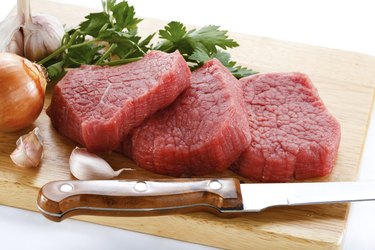
Potassium is an essential mineral needed in your body to maintain muscle contractions, fluid balance, blood pressure and good bone health. Your body is unable to make potassium, so it must come from your daily diet. Adult men and women need at least 4,700 milligrams of potassium daily to maintain good health, according to the Institute of Medicine. Fruits and vegetables are some of the best sources of the mineral, but certain meat and animal products help meet your needs, as well. The American Institute for Cancer Research suggests that you eat no more than 18 ounces of red meat, such as pork, beef and lamb per week to reduce risk of disease.
Pork Products
Video of the Day
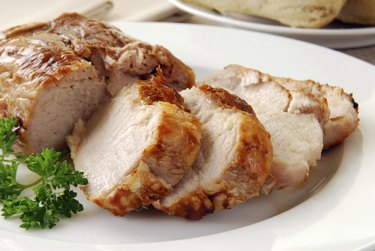
Eating pork products is one way to get potassium. A boneless pork loin chop contains about 770 milligrams of potassium, which meets 16 percent of your daily need for the mineral. A three-ounce serving of Canadian bacon gives you 598 milligrams of potassium and one cup of roasted, cured ham has 573 milligrams. While these pork products are high in potassium, they are also relatively high in fat and also contain cholesterol. Over time, eating a diet high in red meat may lead to an elevated cholesterol level and heart disease, according to the American Heart Association.
Video of the Day
Potassium in Beef
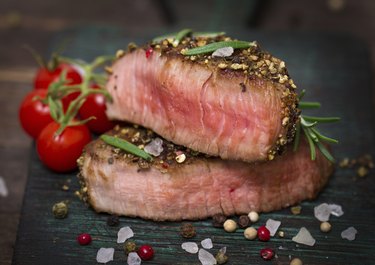
Beef also supplies you with potassium. A six-ounce, rib-eye fillet has roughly 438 milligrams of potassium, which meets 9 percent of your daily need for the mineral. Tenderloin, top loin, chuck, top round, ribs and shank cuts of beef all contain 370 to 400 milligrams of potassium per serving. To reduce fat and calories from beef, choose cuts with the least marbling, trim visible fat from the meat before cooking and discard any drippings. Also look for ground meat labeled with the highest percentage of lean meat; for example, 90 percent lean beef has less fat than 80 percent lean meat.
Other Red Meat
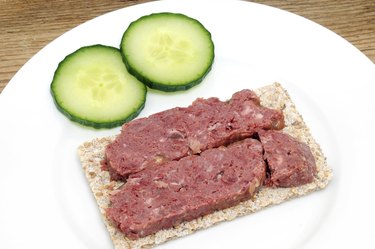
If you like to hunt or are accustomed to cuisines that use diverse meats, other red meat and game also supply you with varying amounts of potassium. Elk loin, venison, goat and buffalo meat each contain from 330 to 460 milligrams of potassium per serving, or 7 to 10 percent of your daily need. Generally, a piece of lamb generally contains about 380 milligrams per serving. A three-ounce serving of rabbit has about 292 milligrams.
Potassium in Poultry
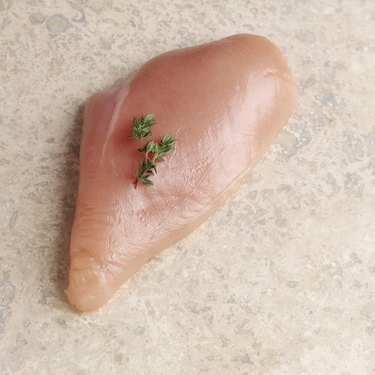
Poultry products, which are not considered red meat, are good sources of potassium, as well. A three-ounce portion of ground turkey or chicken contains 538 to 575 milligrams of potassium, which meets 11 percent of your daily need, according to the U.S. Department of Agriculture. A three-ounce portion of turkey or chicken breast, thigh or leg meat contains roughly 230 milligrams of potassium. To limit fat and calorie content, remove skin and visible fat before cooking poultry.
- Institute of Medicine: Dietary Reference Intakes
- University of Maryland Medical Center: Potassium
- USDA National Nutrient Database for Standard Reference: Nutrient Lists
- American Heart Association: Eat More Chicken, Fish and Beans Than Red Meat
- American Institute for Cancer Research: Recommendations for Cancer Prevention